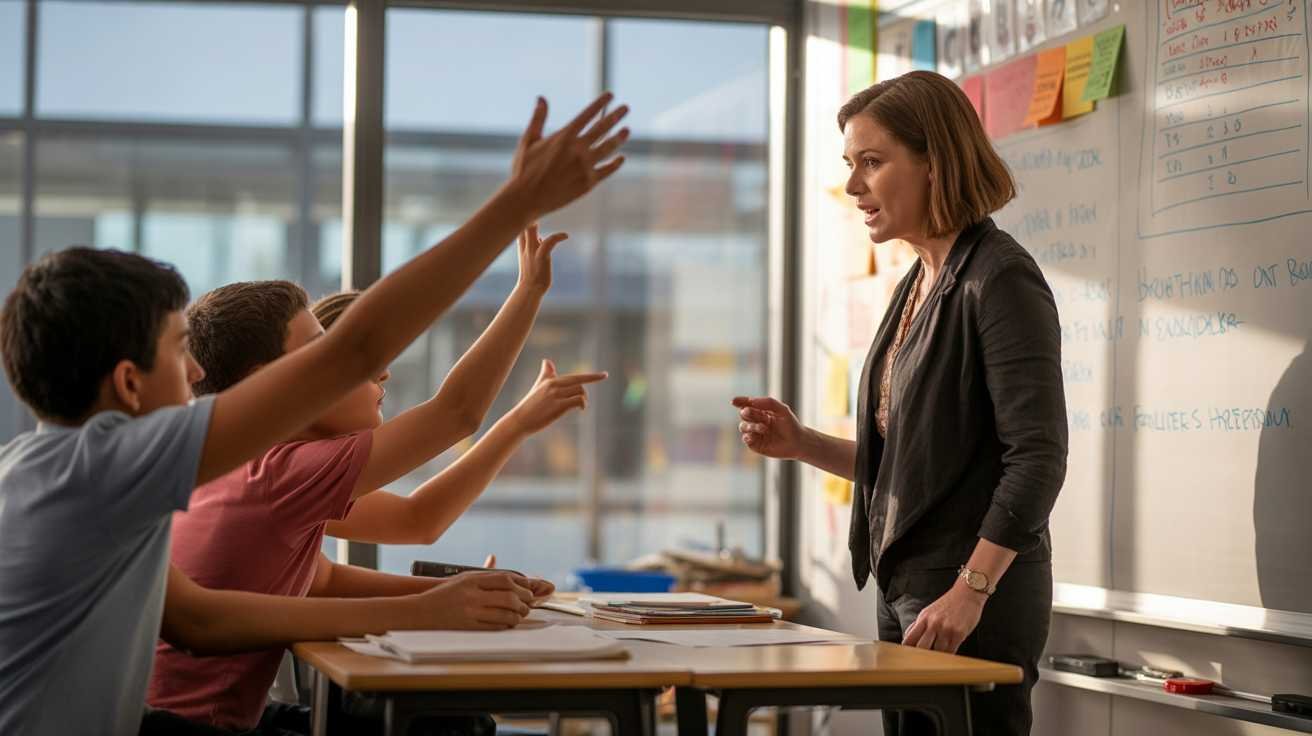In the ever-evolving landscape of education, one truth remains constant: feedback is the catalyst for growth. For educators striving to elevate their teaching practices, harnessing the power of feedback loops is not just beneficial – it’s imperative. Imagine a classroom where instruction is continuously refined, student engagement soars, and learning outcomes improve exponentially. This isn’t a distant dream; it’s the reality that feedback loops can create. However, time is of the essence. The longer you delay implementing these strategies, the more opportunities you miss to transform your teaching effectiveness.
The Power of Feedback Loops in Education
Feedback loops are dynamic, cyclical processes where information is continuously exchanged to foster improvement. In the context of education, they involve the ongoing collection of student responses, analysis of those responses, and subsequent adjustments to teaching methods. This iterative process ensures that instruction remains aligned with student needs, promoting deeper understanding and retention. Without such loops, teaching becomes static, and students’ evolving needs go unaddressed. The urgency to implement feedback loops cannot be overstated – they are the bridge between mediocre and exceptional teaching.
Real-Time Feedback: The Game Changer
Gone are the days when teachers had to wait until the end of a term to gauge student understanding. With real-time feedback mechanisms, educators can assess comprehension instantaneously. Tools like digital quizzes, interactive polls, and classroom response systems provide immediate insights into student learning. This immediacy allows teachers to identify misconceptions on the spot and adjust their instruction accordingly. The result is a classroom environment that is responsive and adaptive, where learning is a continuous, evolving process. Educators who fail to leverage real-time feedback risk falling behind in an increasingly data-driven educational landscape.
Creating a Feedback-Rich Classroom Culture
Establishing a culture that values feedback requires intentional effort and commitment. Teachers must create an environment where students feel safe to express their thoughts and where feedback is viewed as a tool for growth, not criticism. This involves setting clear expectations, modeling constructive feedback, and encouraging self-reflection. When students perceive feedback as a positive force, they are more likely to engage actively in the learning process. Moreover, a feedback-rich culture fosters mutual respect and collaboration, enhancing the overall classroom dynamic. Teachers who neglect to cultivate such an environment may find student engagement waning and learning outcomes stagnating.
Leveraging Technology to Enhance Feedback Loops
In the digital age, technology offers unprecedented opportunities to enhance feedback loops. Learning management systems, educational apps, and online platforms enable seamless communication between teachers and students. These tools facilitate the timely exchange of feedback, track progress over time, and provide data analytics to inform instructional decisions. By integrating technology into feedback processes, educators can streamline communication, personalize learning experiences, and monitor student development with greater precision. Teachers who resist technological integration risk missing out on tools that can significantly enhance their teaching effectiveness.
Feedback Loops and Student Autonomy
Empowering students to take ownership of their learning is a fundamental aspect of effective education. Feedback loops play a crucial role in this empowerment by providing students with the information they need to assess their progress and set personal goals. When students receive regular, constructive feedback, they become active participants in their learning journey, making informed decisions about how to improve. This autonomy not only boosts motivation but also fosters a sense of responsibility and accountability. Educators who fail to promote student autonomy may find that their students lack the initiative to drive their own learning.
Professional Development Through Feedback
Feedback loops are not limited to student-teacher interactions; they are equally vital in professional development. Teachers can engage in reflective practices, seek peer feedback, and participate in collaborative learning communities to enhance their instructional skills. This continuous professional growth ensures that educators remain effective and adaptable in their teaching methods. Institutions that support such feedback-driven professional development cultivate a culture of excellence and innovation. Teachers who neglect their own professional growth may find their teaching practices becoming outdated and less effective.
Assessing the Impact of Feedback Loops
To determine the effectiveness of feedback loops, educators must engage in ongoing assessment and reflection. This involves analyzing student performance data, soliciting feedback from students, and evaluating the impact of instructional adjustments. By systematically assessing the outcomes of feedback loops, teachers can identify successful strategies and areas for improvement. This data-driven approach ensures that feedback loops lead to tangible enhancements in teaching effectiveness. Educators who do not assess the impact of their feedback processes may continue ineffective practices, hindering student progress.
The Future of Feedback Loops in Education
The future of education is inherently tied to the evolution of feedback loops. As educational paradigms shift towards personalized learning, competency-based education, and lifelong learning models, feedback loops will become even more integral. Emerging technologies, such as artificial intelligence and machine learning, hold the potential to further refine and personalize feedback processes, providing real-time, tailored insights for both students and educators. Embracing these advancements will be crucial for educators aiming to remain at the forefront of effective teaching practices. Those who fail to adapt may find themselves lagging in a rapidly advancing educational landscape.


